Tomography
Type of resources
Topics
Keywords
Contact for the resource
Provided by
Years
Formats
Representation types
Update frequencies
-
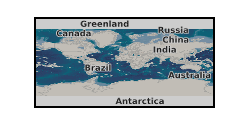
The data are from X-ray tomographic analyses of tubular fossils. All scans were carried out using Synchrotron Radiation X-ray Tomographic Microscopy (SRXTM) except for specimen SMNH X 5324 which was also analysed using Ptychographic X-ray Computed Tomography (PXCT). The methods are described in the paper. The data consist of a stacked series of .tif files that represent maps of X-ray attenuation. The individual slices can be viewed with standard graphics software. The datasets can be studied in 3D using tomographic reconstruction software such as Avizo (www.vsg3d.com/), Spiers (www.spiers-software.org/), VG Studio Max (www.volumegraphics.com) etc. The voxel size, which is needed for scale calculations, varies between datasets and is given below. Some datasets consist of two 'blocks' of data, with slices named [specimen name]_B1 and [specimen name]_B2. These are placed in the same folder and follow on directly from one another. They can be opened together as a single dataset. The files relate to the following publication: Cunningham, J. A., Vargas, K., Liu, P., Belivanova, V., Marone, F., Martinez-Perez, C., Guizar-Sicairos, M., Holler, M., Bengtson, S. & Donoghue, P. C. J. 2015. Critical appraisal of tubular putative eumetazoans from the Ediacaran Weng'an Doushantuo biota. Proceedings of the Royal Society Series B: Biological Sciences.
-
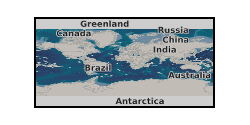
X-ray CT scan dataset of Darley Dale sandstone sample tts6. This sample was deformed in a true triaxial apparatus, and is fully described in the PhD thesis of Stuart (1992, UCL). The sample is a cube, measuring approximately 50 mm on a side. The sample experienced two sets of true triaxial deformation (test DDSS0009 and DDSS0010), with different applied stresses in the 1, 2 and 3 directions. This deformation produced distinct families of brittle microcracks, which were detected using acoustic emissions and seismic velocity analysis. This X-ray CT scan dataset was collected in 2019 at the University of Aberdeen by Dr Stewart Chalmers and Dr Dave Healy.
-
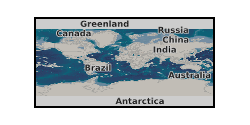
H2 adsorption data on sub-bituminous coal as a function of pressure. Hydrogen flooding of a coal core. Micro CT imaging of the effect on coal swelling after hydrogen injection. Hydrogen is trapped, and no swelling is observed indicating that coal might be a good candidate for the storage of hydrogen.
-

Data used for the peer-reviewed manuscript entitled 'Variation of hydraulic properties due to dynamic fracture damage: Implications for fault zones' by Aben, FM, Doan, M-L, and Mitchell, TM. Manuscript currently in revision for Journal of Geophysical Research. Data consists of: Text files with the mechanical data timeseries (confining pressure, and pore volume and pore fluid pressure for two pore fluid pressure intensifiers) obtained during permeability measurements of deformed rock samples. File name contains sample number. Additional two mechanical data files (calib15 and calib18) are calibration files for the pore volume measurements. Manually traced X-ray CT images obtained on six samples.
-

A continuous four-year record of physicochemical properties of soils deglaciated in the last century due to the retreat of Midtre Lovénbreen (ML) glacier in the vicinity of Ny-Ålesund, Svalbard. Below ground data are accompanied by an over ground three-year (2022-2024) photographic record aimed at capturing snow depth levels during the transition seasons between Arctic summer and winter (NET0105681_SUNSPEARS_Photographic data). This dataset aids our understanding of deglaciated soil evolution in the current rapidly changing Arctic landscape. At four locations (reported in NET0105681_SUNSPEARS_GPS data) along the ML glacier forefield, in October 2020, soil in four different stages of development, depending on time elapsed since deglaciation, was sampled. Samples were processed in the laboratory in order to determine their texture (results reported in NET0105681_SUNSPEARS_Particle Size Analysis data) and X-ray CT scanned in order to determine their internal structure (CT reconstructed images reported in NET0105681_SUNSPEARS_Computed Tomography data). At two of the four sampling locations (SUN1 and SUN2), geophysical monitoring stations were installed, which use an array of sensors to continuously measure soil electrical resistivity in 3D (NET0105681_SUNSPEARS_PRIME 3D ERT data). Raw electrical resistivity data, instrument health data and corresponding reconstructed 3D electrical resistivity profile images (and timelapse videos) of the subsurface are included. Topographic surveys of all the sensors operated by the monitoring stations are included. In the vicinity of the two geophysical monitoring stations, longer and deeper electrical resistivity profiles were acquired. These allow one to image the boundary between the active layer (that freezes and thaws depending on ambient temperature) and underlying permanently frozen ground. Raw electrical resistivity data and corresponding reconstructed 2D electrical resistivity profile images of the subsurface are included (NET0105681_SUNSPEARS_PRIME 2D ERT data).
-
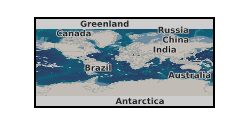
This dataset contains three dimensional synchrotron x-ray tomographic (SRXTM) datasets and analyses of nuclei and nucleoli in embryo-like fossils from the Ediacaran Weng'an Biota. The data accompanies the following paper: Yin Z, Cunningham JA, Vargas K, Bengtson S, Zhu M, Donoghue PCJ. 2017. Nuclei and nucleoli in embryo-like fossils from the Ediacaran Weng'an Biota. Precambrian Research. DOI: 10.1016/j.precamres.2017.08.009 Each .7z archive zip file contains the data relating to a single specimen.
-

Reconstructed data - This dataset contains the reconstructed image data. Each sub-folder contains a set of 2D slices that together make up a 3D image from that time point. Not all images from all datasets have been reconstructed, the values in parentheses refer to the scan numbers that have been reconstructed. Raw data - This dataset contains the raw unprocessed image data collected during the development of the XRheo system. Processed data - This dataset contains the post-processing outputs from analysis of the data from the XRheo development experiments. Each sub-folder contains the files generated during filtering, segmentation and separation of the features [M (melt), B (bubbles), X (crystals)], and the post processing analysis for size distributions and tracking. The data sets included are the results of dynamic X-ray tomography experiments performed on multiphase synthesised magmas being deformed under known temperature and strain rates for a concentric cylinder geometry.
-
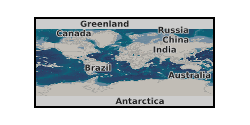
The datasets contains two sets of three dimensional images of Ketton carbonate core of size 5 mm in diameter and 11 mm in length scanned at 7.97µm voxel resolution using Versa XRM-500 X-ray Microscope. The first set includes 3D dataset of dry (reference) Ketton carbonate. The second set includes 3D dataset of reacted Ketton carbonate using hydrochloric acid.
-

Data has been recorded during triaxial rock deformation experiments where Lanhelin granite samples were subjected to dynamic and half-controlled shear failure. The data consists of mechanical data (load, displacement, confining pressure, strain gauge data), ultrasonic data (AE source locations and arrival times, sensor locations, arrival times of active acoustic surveys), and scanning electron microscope images of the samples after shear failure. Dataset contains all data necessary to evaluate the results presented in the paper entitled: 'Off-fault damage characterisation during and after experimental quasi-static and dynamic rupture in crystal rock from laboratory P-wave tomography and microstructures' by Aben, Brantut, and Mitchell, Journal of Geophysical Research: Solid Earth.
-

3-D P-wave velocity model of the crust and uppermost mantle beneath Macquarie Island and surrounding region from teleseismic tomography. The dataset contains data and files that can be used to plot the teleseismic tomography model that was produced from broadband seismic data collected as part of the Macquarie Ridge experiment undertaken in 2020-2021 (NERC grant NE/T000082/1). The model region approximately spans 53° - 56° South and 157° - 160.5° East. The data can be accessed from the AusPass data portal at https://auspass.edu.au/networks/macquarieridge.html. The information contained in this repository can be used to plot or otherwise use this model for other purposes. The dataset includes a detailed description of the format in a README file.
 NERC Data Catalogue Service
NERC Data Catalogue Service